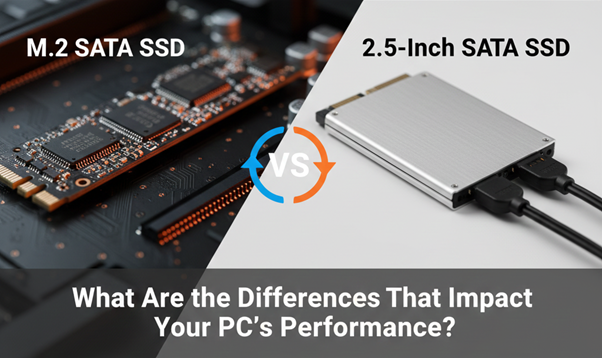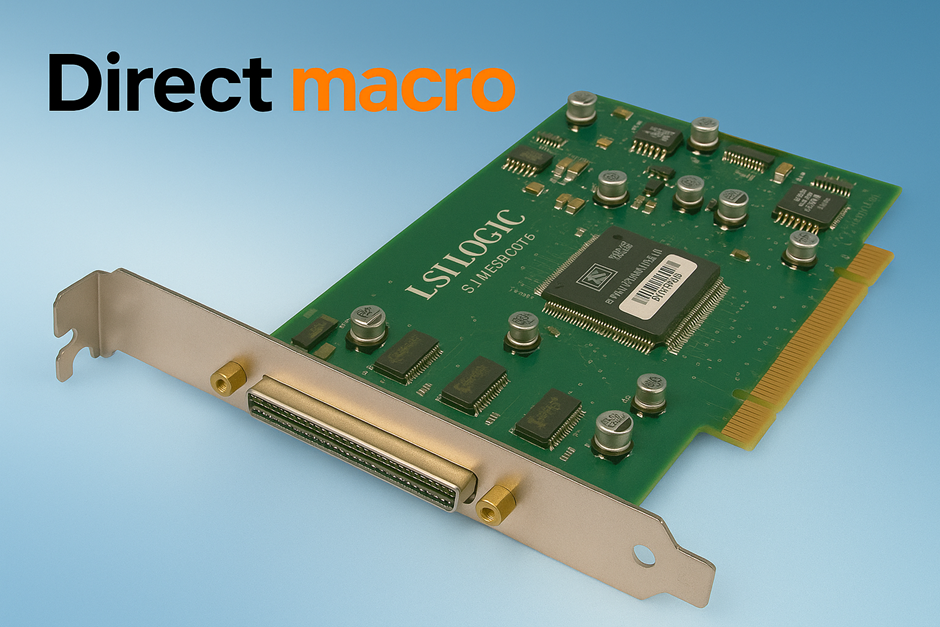Data Center Management: Common Issues and Fixes
Today’s data center management demands more than maintaining uptime—it’s about crafting a seamless, efficient, and future-proof environment. As the digital heart of an organization, data centers must balance a handful of tasks:
- ensuring robust security,
- optimizing resource utilization,
- and maintaining hardware.
Your role in managing these operations across vast, often global, networks is crucial. A proactive, strategic approach is vital in transforming potential issues into opportunities for innovation and improvement. This approach ultimately drives the success of your IT infrastructure.
Modern data centers are a far cry from their predecessors, now being intricate ecosystems that require precise orchestration. The challenges are multifaceted, involving not just the physical management of space, power, and cooling but also the integration of advanced technologies like AI and automation to streamline operations. Staying ahead of these challenges means embracing continuous learning and adaptation. This blog delves into the common issues plaguing data centers today. It offers practical solutions, aiming to equip you with the knowledge to enhance your data center’s efficiency, security, and overall performance.
Challenges in Data Center Management
Managing a data center involves navigating a landscape of complex technical and operational challenges. From ensuring efficient operations to securing sensitive data, the demands placed on data center managers are diverse and continually evolving. Here are some key challenges faced in data center management and how to address them effectively.
Data Center Management: Operations and Their Complexities
- Understanding Operational Workflow: Effective data center management starts with a deep understanding of the operational workflow. This includes the processes involved in data storage, retrieval, processing, and security. Streamlining these workflows can significantly enhance efficiency and reduce downtime.
- Balancing Performance and Efficiency: Data center management must balance the need for high performance with operational efficiency. This involves optimizing hardware and software to handle peak loads without excessive energy consumption or overheating, ensuring the data center runs smoothly and cost-effectively.
- Dealing with Legacy Systems: Many data centers still rely on older, legacy systems that can be difficult to integrate with newer technologies. Managing these systems while planning upgrades or replacements is a critical challenge requiring careful strategy and execution in data center management.
Managed Data Center Solutions
- Benefits of Managed Services: Managed data center services offer numerous advantages, including expert support, improved scalability, and cost savings. By outsourcing routine management tasks to specialized providers, these services help alleviate the burden on in-house IT teams involved in data center management.
- Choosing the Right Managed Service Provider: Selecting a managed service provider (MSP) involves evaluating their expertise, service offerings, and compatibility with your organization’s needs. A good MSP should offer flexible solutions, robust security measures, and a proven track record of reliability.
- Integrating Managed Services with Existing Infrastructure: Successfully integrating managed services with existing data center infrastructure requires a seamless transition plan. This includes ensuring compatibility, data migration, and aligning the managed services with your organization’s operational goals and compliance requirements to streamline data center management.
Data Center Security Problems

Security is one of the most critical aspects of data center management. Protecting sensitive data and maintaining operational integrity requires robust security measures.
Physical Data Security Problems
- Unauthorized Access (Problem): Unauthorized access to sensitive areas of the data center can lead to data breaches, equipment theft, or sabotage. Traditional lock-and-key methods are no longer sufficient to deter determined intruders.
- Access Control Systems (Solution): Implementing advanced access control systems, such as biometric scanners and keycard access, can help prevent unauthorized entry. These systems ensure that only authorized personnel can access critical areas, thereby enhancing security and aiding data center management.
- Insufficient Surveillance (Problem): Lack of continuous monitoring can delay the detection of security breaches or suspicious activities, increasing the risk of damage or theft.
- Surveillance and Monitoring (Solution): Continuous surveillance using CCTV cameras and monitoring systems ensures that any suspicious activities are detected and addressed promptly. Real-time monitoring allows for immediate response to potential threats, reducing the risk of severe incidents and enhancing data center management.
- Environmental Threats (Problem): Data centers are vulnerable to natural disasters, fires, and other environmental hazards that can cause significant damage and disrupt operations.
Environmental Controls (Solution): Protecting the physical environment of the data center from natural disasters, fires, and other hazards is essential. This includes fire suppression systems, flood controls, and earthquake-resistant infrastructure. Implementing these measures can safeguard the data center against environmental threats and support data center management.
Cybersecurity Threats
- External Cyber Attacks (Problem): Data centers are prime targets for cyber attacks, including hacking, malware, and denial-of-service attacks, which can compromise data integrity and availability.
- Firewall and Intrusion Detection Systems (Solution): Implementing robust firewall and intrusion detection systems helps protect against external cyber threats and unauthorized access attempts. These systems act as the first line of defense, detecting and blocking malicious activities before they can cause harm, thereby aiding data center management.
- Undetected Vulnerabilities (Problem): Regular security vulnerabilities can go unnoticed, leaving the data center susceptible to attacks. With periodic assessments, potential weaknesses may be addressed.
- Regular Security Audits (Solution): Conducting regular security audits and vulnerability assessments can identify potential weaknesses in the data center’s security posture. This allows for timely remediation, ensuring that security measures are up-to-date and effective against emerging threats.
- Human Error and Social Engineering (Problem): Employees can be a weak link in cybersecurity, susceptible to social engineering attacks such as phishing, leading to unauthorized access and data breaches.
- Employee Training (Solution): Educating staff on cybersecurity best practices and potential threats is crucial in preventing social engineering attacks. Regular training sessions and awareness programs ensure that employees are equipped to recognize and respond to security threats, fostering a data center management culture of security awareness.
Networking and Cabling Challenges
Efficient networking and cabling are fundamental to data center management. Poor management in this area can lead to network downtime and increased maintenance costs.
Efficient Cable Management
- Structured Cabling Systems: Implementing structured cabling systems helps organize cables neatly and efficiently, reducing the risk of accidental disconnections and simplifying maintenance.
- Labeling and Documentation: Properly label cables and maintain up-to-date documentation to ensure any network changes or troubleshooting can occur quickly and accurately.
- Using Cable Management Accessories: Accessories like cable management arms, trays, ties, and organizers help keep cables tidy and prevent tangling, which can lead to damage and network issues.
Network Downtime Issues: Redundant Network Paths
- Redundant Switches: Deploy multiple switches in different locations. If one fails, another takes over, ensuring continuous operation and supporting data center management.
Stacking Switches: Combine switches into a single logical unit; others handle the load if one fails.
- Dual Routers: Implement two routers; if one fails, the other ensures continuous data flow, supporting data center management.
High-Availability Protocols: Use HSRP or VRRP for automatic failover between routers.
- Load Balancers:
- Network Load Balancers: Distribute traffic across multiple servers and paths; redirect traffic if one fails.
- Application Load Balancers: Ensure application requests are evenly distributed across multiple instances.
- Network Interface Cards (NICs):
- Dual-Homed NICs: Use NIC teaming for two separate network connections; one maintains connection if the other fails.
- Link Aggregation: Combine multiple NICs into one link for redundancy and increased bandwidth.
- Redundant Fiber Paths: Lay multiple cables along different routes; if one is cut, others carry data.
- Diverse Path Routing: Route data through different physical and logical paths to minimize single points of failure.
- Network Management Systems:
- Automated Failover Systems: Enable quick detection of failures and automatic switching to redundant paths.
Monitoring and Alerts: Use continuous monitoring and real-time alerts for proactive management.
Managing Data Center Resources
Efficient resource management is essential to maintaining the performance and longevity of data center operations.
Power and Cooling Management
Optimizing Power Usage: Implementing power management strategies, such as using energy-efficient power supplies and optimizing load distribution, can reduce energy consumption and costs.
- Efficient Cooling Solutions: Utilizing advanced cooling solutions, such as hot aisle/cold aisle containment, cooling fans, and liquid cooling, helps maintain optimal operating temperatures and extends the life of the equipment.
- Monitoring Systems: Installing power and cooling monitoring systems allows for real-time tracking of energy usage and thermal conditions, enabling proactive adjustments.
Resource Allocation and Utilization
- Virtualization: Implementing virtualization technologies can optimize resource usage by allowing multiple virtual servers to run on a single physical server, reducing hardware costs and improving scalability.
- Capacity Planning: Regular capacity planning ensures the data center has the necessary resources to meet current and future demands without overprovisioning.
- Automated Resource Management: Utilizing automated tools for resource allocation and management can improve efficiency and reduce the risk of human error.
Data Center Optimization Strategies
Data center optimization is crucial for maintaining high performance and efficiency.
Improving Energy Efficiency
- Energy-Efficient Hardware: Investing in energy-efficient servers, storage, and networking accessories can significantly reduce power consumption and operational costs.
- Green Data Center Practices: Implementing green practices, such as using renewable energy sources and recycling electronic waste, contributes to sustainability and can enhance the organization’s reputation.
- Energy Audits: Conducting regular energy audits helps identify areas of inefficiency and provides insights into potential improvements.
Implementing Automation and AI
- Automated Monitoring and Management: Using automation tools for monitoring and managing data center operations can reduce the need for manual intervention, improve accuracy, and increase efficiency.
- AI-Driven Insights: Leveraging AI and machine learning can provide valuable insights into data center management, predict potential issues, and suggest optimization strategies.
- Workflow Automation: Automating routine workflows and processes, such as backups and updates, can free up valuable time for IT staff to focus on strategic initiatives.
Conclusion
Navigating the complexities of data center management requires a comprehensive understanding of the common challenges and their solutions. By addressing issues related to operations, security, networking, resource management, and optimization, you can enhance performance, improve efficiency, and ensure the reliability of your infrastructure. Embracing innovative technologies and proactive strategies will resolve current issues and pave the way for a more resilient and future-ready data center.
FAQs
Which device ensures power to a server or network device during short power outages?
An uninterruptible power supply (UPS) ensures power to a server or network device during short power outages. A UPS provides backup power by using batteries, allowing servers and network devices to continue operating during power interruptions and giving time to properly shut down systems to prevent data loss or hardware damage.
What are the most common issues faced in data center management?
The most common issues in data center management include ensuring operational efficiency, managing security threats, optimizing networking and cabling, maintaining power and cooling systems, and integrating legacy systems with modern technologies.
Which area of focus helps identify weak network architecture or design?
Network auditing and assessment help identify weak network architecture or design. This process thoroughly examines the network’s current setup, performance, and security to pinpoint vulnerabilities, inefficiencies, and areas for improvement. Regular audits can reveal bottlenecks, outdated hardware, misconfigurations, and potential security risks, allowing for strategic enhancements to the network architecture.
What are some common problems with the network server?
Common problems with network servers include:
- Hardware Failures: Issues with physical components such as hard drives, power supplies, and cooling systems.
- Software Issues: Operating system crashes, software bugs, or incompatible updates.
- Security Threats: Vulnerabilities leading to malware, ransomware, or unauthorized access.
- Network Connectivity: Problems with network interfaces, cabling, or switches causing downtime or slow performance.
- Resource Overload: Excessive CPU, memory, or storage demand leads to poor performance.
- Configuration Errors: Incorrect settings or misconfigurations causing disruptions or inefficiencies.
- Backup Failures: Incomplete or failed backups, risking data loss.
What are some common issues with computer cooling?
Common issues with computer cooling include:
- Dust Accumulation: Dust buildup on fans and heatsinks reduces airflow and cooling efficiency.
- Fan Failure: Malfunctioning or broken fans fail to adequately cool components, leading to overheating.
- Poor Airflow: Improper placement of components or inadequate case ventilation restricts airflow.
- Thermal Paste Degradation: Worn or improperly applied best thermal paste between the CPU/GPU and their heatsinks reduces heat transfer.
- Blocked Vents: Obstructed intake or exhaust vents hinder the cooling process.
- High Ambient Temperature: Operating in a hot environment decreases the efficiency of cooling systems.
- Overclocking: Running components beyond their rated speeds generates more heat than standard cooling solutions can handle.
- Insufficient Cooling Solutions: Using inadequate cooling systems for high-performance components results in overheating.
- Improper Case Design: Cases without sufficient cooling design or airflow management contribute to higher temperatures.
- (How To Choose a PC Case Under 50$ in 2024: An Essential Guide)
- Incorrect Fan Orientation: Misplaced fans can cause poor airflow patterns, reducing overall cooling effectiveness.
Do you need advice on buying or selling hardware? Fill out the form and we will return.

Sales & Support
(855) 483-7810
We respond within 48 hours on all weekdays
Opening hours
Monday to thursday: 08.30-16.30
Friday: 08.30-15.30








